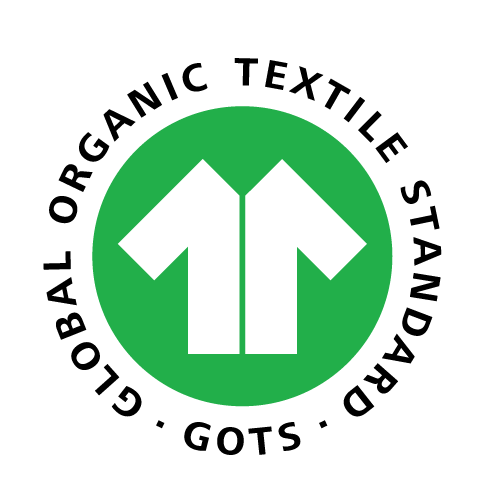October is Breast Cancer Awareness Month; a time when pink ribbons, pink products, and fundraising campaigns flood our stores, social media feeds, and communities. While the intention behind these campaigns is often to raise awareness and funds for research and support, not all pink campaigns are created equal. Some are what critics call “pinkwashing.”
What Is Pinkwashing?

Pinkwashing refers to the practice of companies using breast cancer awareness to promote themselves or their products, while contributing little, or nothing, to the cause itself. Often, it involves slapping a pink ribbon on items that may even contain harmful chemicals, or marketing campaigns that prioritize profit over genuine support for breast cancer research and patient care. Essentially, it’s marketing dressed as charity.
The Hidden Dangers of Synthetic Fabrics

While pinkwashing is a concern, there's another issue that's often overlooked: the potential health risks associated with the very fabrics we wear. Many synthetic fabrics, such as polyester, nylon, and spandex, are made from petrochemicals and can contain harmful substances that may pose health risks.
1. Chemical Exposure from Synthetic Fabrics
Synthetic fabrics are often treated with various chemicals during manufacturing to enhance their properties. These can include:
-
Antimony: A toxic substance used in polyester production, linked to respiratory and cardiovascular issues.
-
PFAS (Per- and Polyfluoroalkyl Substances): Known as "forever chemicals," these are used for water and stain resistance but have been associated with cancer, liver damage, and immune system disruption.
-
Azo Dyes: Commonly used for coloring fabrics, some azo dyes can break down into aromatic amines, which are known carcinogens. Luckily, azo-free dyes exist which are a safer alternative to dyed clothing.
2. Health Risks from Clothing
The risks aren't just theoretical. Studies have shown that certain chemicals used in synthetic fabrics can leach into the body:
-
Dermal Absorption: Sweat can cause chemicals like phthalates and bisphenols to diffuse from synthetic fabrics into the skin, potentially leading to hormone disruption and other health issues.
-
Microplastics: Synthetic fibers shed microplastics during washing and wear, which can be inhaled or ingested, potentially leading to respiratory problems and other health concerns.
3. Particular Concern for Close-to-Skin Items
Items that sit directly on your skin, such as underwear and socks, are of particular concern. These garments are in constant contact with sensitive areas of the body and can lead to prolonged exposure to harmful chemicals. Given the potential risks, it's advisable to choose alternatives made from natural, organic materials.
It’s a reminder that what we wear can be just as important as what we eat or apply to our skin. Our clothing touches our body every day, so being conscious of the materials we choose, just as we are about our food, skincare, and household products, can play a meaningful role in overall health and wellbeing.
Making Safer Choices: Embrace Natural Fabrics
To minimize exposure to harmful chemicals and support breast cancer awareness in a meaningful way, consider switching to fabrics like organic cotton and merino wool. These materials are not only safer for your health but also more sustainable for the environment.
Why It Matters for Close-to-Skin Items
Clothing that sits directly on your skin such as underwear, socks, bras, and base layers, can increase your exposure to chemicals from synthetic fabrics. Sweat and body heat can cause substances like dyes, PFAS, and other petrochemical residues to transfer from fabric to skin, which is why choosing natural, organic fabrics is especially important for these garments.
-
Organic Cotton: Grown without synthetic pesticides or fertilizers, organic cotton is a safer choice for both farmers and consumers. It’s gentle on sensitive skin and perfect for underwear and other items that stay in close contact with your body.
-
Merino Wool: Naturally breathable and biodegradable, merino wool is a sustainable alternative to synthetic fibers. It’s also ideal for socks, base layers, and other close-to-skin clothing because it helps regulate temperature and reduces irritation.
How to Shop Consciously This October
-
Research the Brand: Look for transparency. Are they donating a percentage of sales? How much? To whom?
-
Check the Product: Ensure the product itself isn’t potentially harmful, some pinkwashed items contain chemicals linked to cancer risk.
-
Support Trusted Organizations Directly: Consider donating directly to reputable organizations like the Canadian Cancer Society or local breast cancer support programs.
-
Prioritize Awareness That Inspires Action: Engage with educational campaigns that promote preventive care, early detection, and equitable access to healthcare.
A Thoughtful Approach

Breast Cancer Awareness Month should be more than a marketing opportunity, it’s a time to amplify education, support patients and survivors, and drive meaningful research. By being mindful of pinkwashing and the potential health risks of synthetic fabrics, we can make sure our attention, dollars, and voices are truly contributing to a healthier future.















Leave a comment